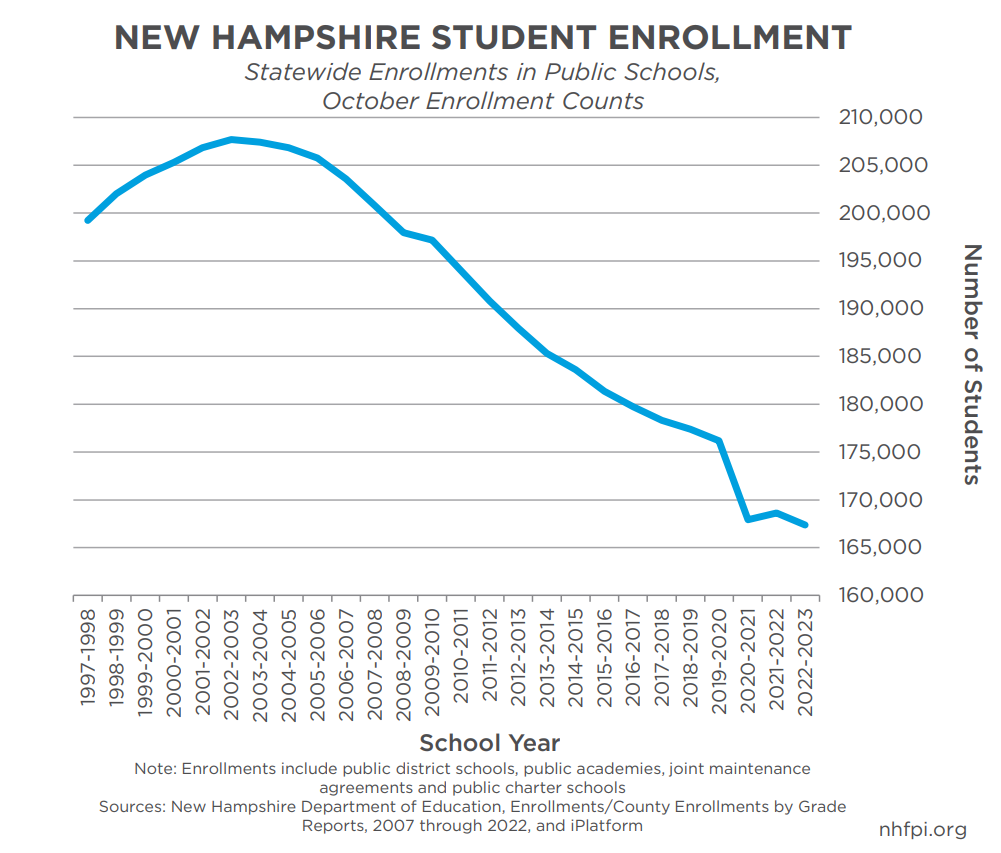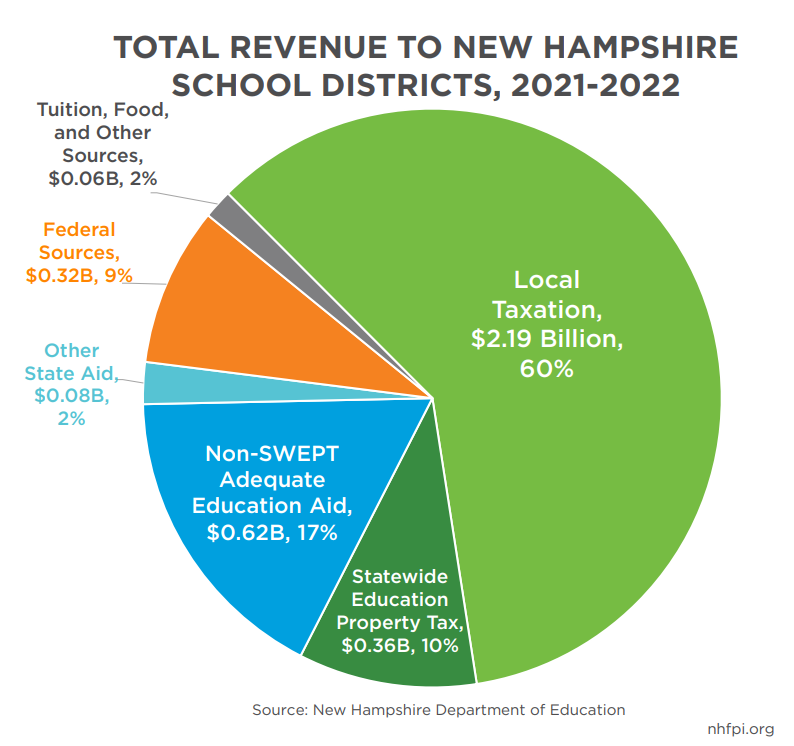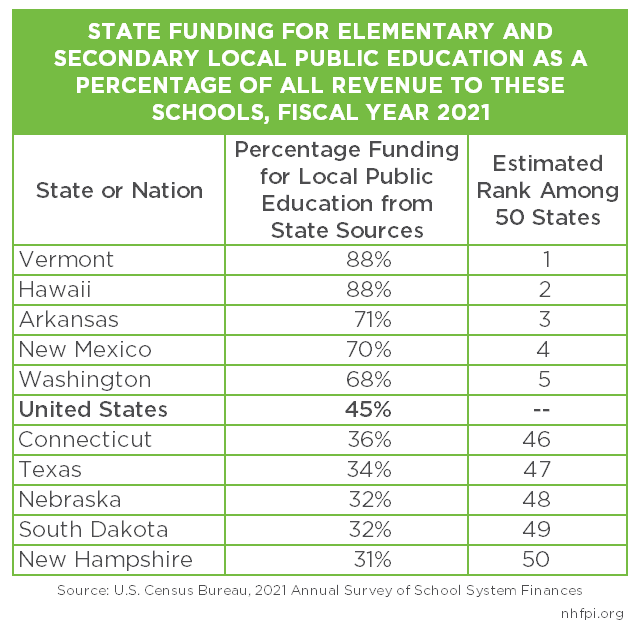Download a PDF version of this Fact Sheet here.
Number of Students in New Hampshire Schools Continues to Decline
- About 40,300 fewer students were in New Hampshire public schools the last academic year than during 2002-2003.
- This reduction is driven by long-term demographic changes, as New Hampshire had the largest percentage decline in its child population of any state between 2010 and 2020.
Local Public Education Largely Funded by Local Taxes
- Property taxes raised locally accounted for 70 percent of public school district revenue in the 2021-2022 school year.
- Federal aid, usually about 5 percent of school district revenue in New Hampshire, was higher due to one-time American Rescue Plan Act aid.
- About $350.6 million of these temporary American Rescue Plan Act funds for school districts will expire September 30, 2024.
- New Hampshire ranked 7th highest among the 50 states for school revenue from all sources (federal, state, and local government) per pupil in fiscal year 2021. Relative to personal income earned in the state, New Hampshire ranked 39th.[ii]
- New Hampshire ranked 3rd in revenue per pupil from local sources ($13,770), and 33rd in revenue per pupil from state sources ($6,846) in the nation.
- New Hampshire had the smallest percentage of total public school district revenue sourced from the State government of any state.
Higher Education Funding Lowest Among States
- New Hampshire appropriated the lowest amount of public funds per full time equivalent student, at $3,699 each, among all fifty states in fiscal year 2022. The national average among state funding levels was $10,237.
- While funding for the Community College System has grown faster than inflation since 2006, funding for the University System would have needed to be over $39 million higher than it was in State Fiscal Year 2023 to match the inflation-adjusted 2006 level.
State Budget Investments and Policy Changes in Education
The State Fiscal Years 2024-2025 State Budget includes several significant changes to State funding for local public and higher education:
- Boosted base State funding amounts per public school pupil from $3,866 to $4,100
- Enhanced free and reduced-price meal program per pupil aid from $1,933 to $2,300 per student, and eliminated aid based on percentage eligible
- Slightly increased aid for special education and English language learner students
- Eliminated additional aid for students scoring below proficient on 3rd grade reading tests
- Substantially increased Extraordinary Needs Grants, based on combination of free and reduced-price meal eligibility and taxable property values per student, to up to $11,500 per student by State Fiscal Year 2025
- Instituted Hold Harmless Grants to ensure no districts lose funds initially, phased out biennially through 2034
- Added $10 million to Public School Infrastructure Fund
- Appropriated $39.7 million to fund Education Freedom Accounts used by student families for permitted purposes
- Changed the division of business tax revenue flows between the General and Education Trust Funds
- Increased general operating aid to both the University System and the Community College System, and added funds targeted at specific initiatives
Download a PDF of the Fact Sheet Education in New Hampshire: Fiscal Policies in 2023 with citations, published at the New Hampshire Fiscal Policy Institute’s 8th Annual Conference, by clicking here.



